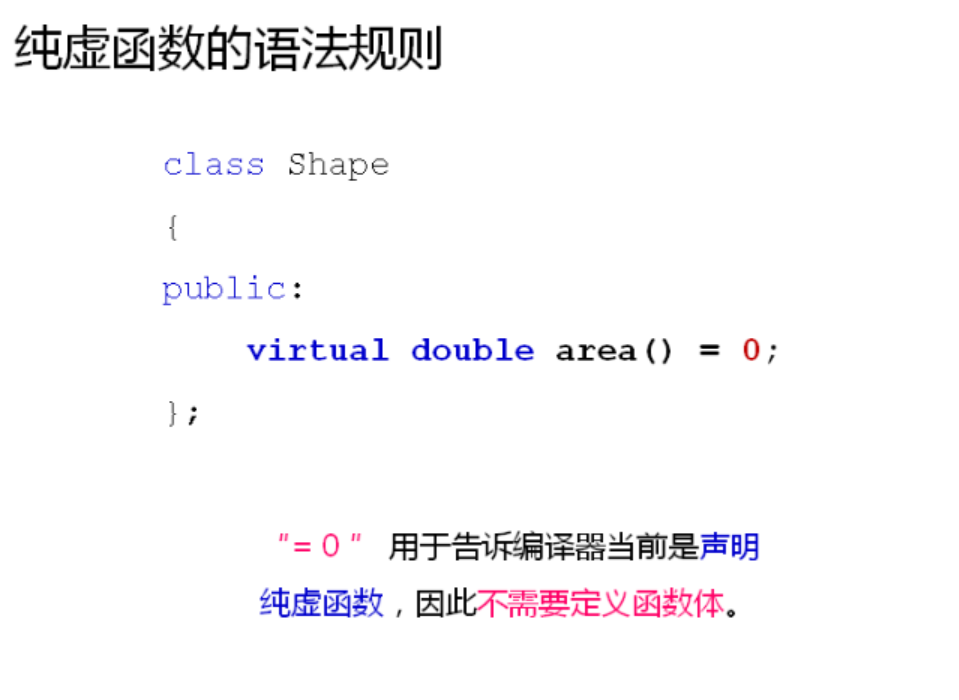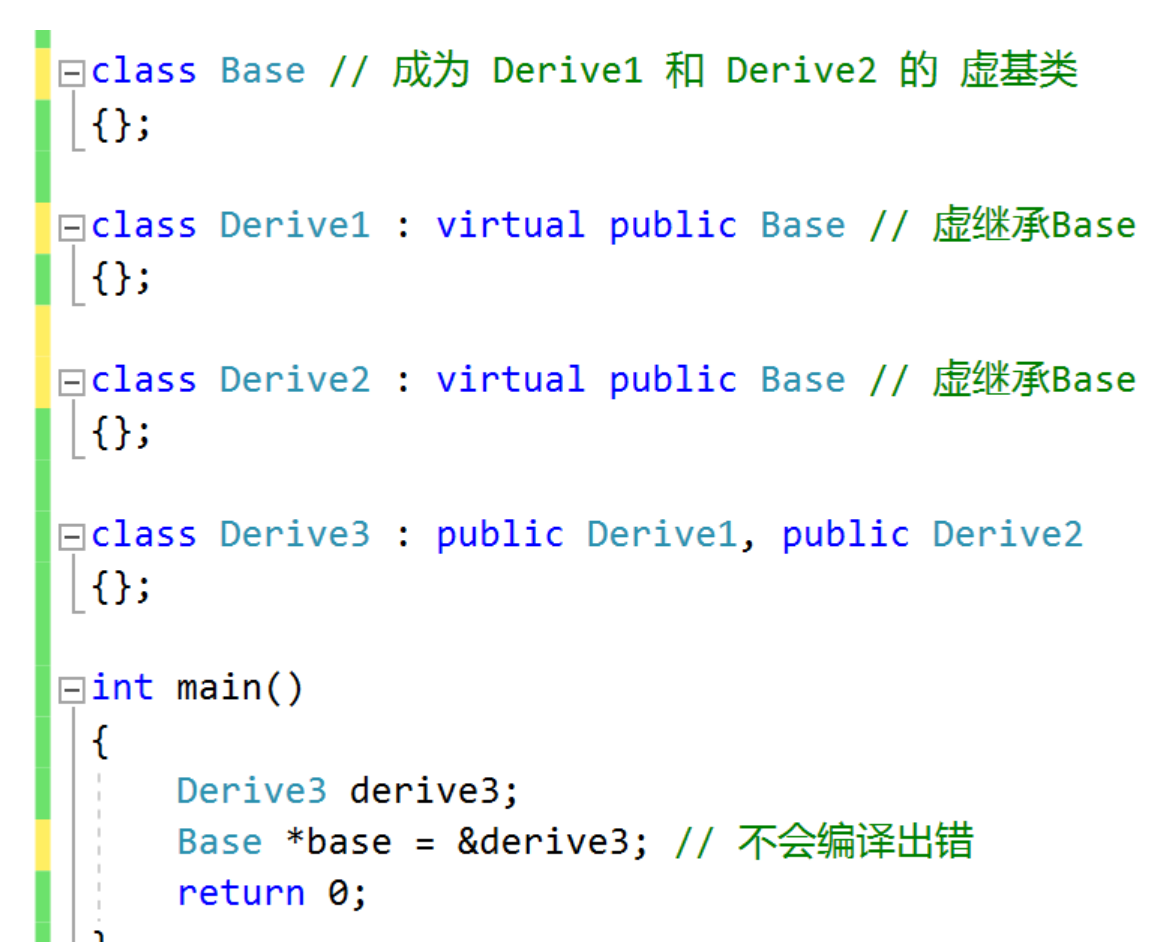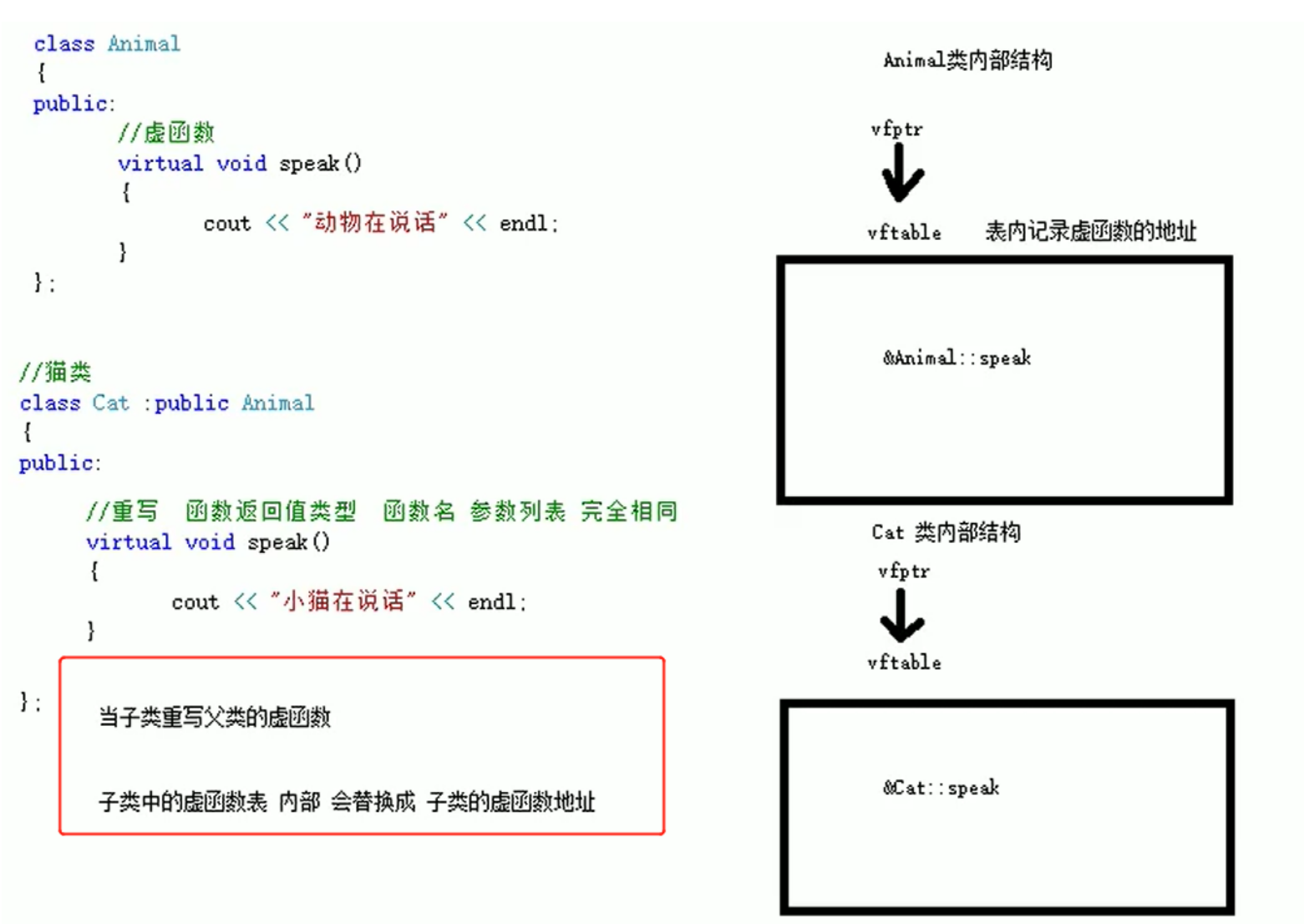C++的纯虚函数和抽象类
在C++中,可以将虚函数声明为纯虚函数,语法格式为:
virtual 返回值类型 函数名 (函数参数) = 0;
纯虚函数没有函数体,只有函数声明,在虚函数声明的结尾加上=0,表明此函数为纯虚函数。
最后的
=0并不表示函数返回值为0,它只起形式上的作用,告诉编译系统“这是纯虚函数”。
包含纯虚函数的类称为抽象类(Abstract Class)。之所以说它抽象,是因为它无法实例化,也就是无法创建对象。原因很明显,纯虚函数没有函数体,不是完整的函数,无法调用,也无法为其分配内存空间。抽象类通常是作为基类,让派生类去实现纯虚函数。派生类必须实现纯虚函数才能被实例化。纯虚函数使用举例:

#include <iostream>
using namespace std;
//线
class Line{
public:
Line(float len);
virtual float area() = 0;
virtual float volume() = 0;
protected:
float m_len;
};
Line::Line(float len): m_len(len){ }
//矩形
class Rec: public Line{
public:
Rec(float len, float width);
float area();
protected:
float m_width;
};
Rec::Rec(float len, float width): Line(len), m_width(width){ }
float Rec::area(){ return m_len * m_width; }
//长方体
class Cuboid: public Rec{
public:
Cuboid(float len, float width, float height);
float area();
float volume();
protected:
float m_height;
};
Cuboid::Cuboid(float len, float width, float height): Rec(len, width), m_height(height){ }
float Cuboid::area(){ return 2 * ( m_len*m_width + m_len*m_height + m_width*m_height); }
float Cuboid::volume(){ return m_len * m_width * m_height; }
//正方体
class Cube: public Cuboid{
public:
Cube(float len);
float area();
float volume();
};
Cube::Cube(float len): Cuboid(len, len, len){ }
float Cube::area(){ return 6 * m_len * m_len; }
float Cube::volume(){ return m_len * m_len * m_len; }
int main(){
Line *p = new Cuboid(10, 20, 30);
cout<<"The area of Cuboid is "<<p->area()<<endl;
cout<<"The volume of Cuboid is "<<p->volume()<<endl;
p = new Cube(15);
cout<<"The area of Cube is "<<p->area()<<endl;
cout<<"The volume of Cube is "<<p->volume()<<endl;
return 0;
}运行结果:
The area of Cuboid is 2200
The volume of Cuboid is 6000
The area of Cube is 1350
The volume of Cube is 3375

本例中定义了四个类,它们的继承关系为:Line --> Rec --> Cuboid --> Cube。Line 是一个抽象类,也是最顶层的基类,在 Line 类中定义了两个纯虚函数 area() 和 volume()。在 Rec 类中,实现了 area() 函数;所谓实现,就是定义了纯虚函数的函数体。
但这时 Rec 仍不能被实例化,因为它没有实现继承来的 volume() 函数,volume() 仍然是纯虚函数,所以 Rec 也仍然是抽象类。直到 Cuboid 类,才实现了 volume() 函数,才是一个完整的类,才可以被实例化。可以发现,Line 类表示“线”,没有面积和体积,但它仍然定义了 area() 和 volume() 两个纯虚函数。
这样的用意很明显:Line 类不需要被实例化,但是它为派生类提供了“约束条件”,派生类必须要实现这两个函数,完成计算面积和体积的功能,否则就不能实例化。在实际开发中,你可以定义一个抽象基类,只完成部分功能,未完成的功能交给派生类去实现(谁派生谁实现)。
这部分未完成的功能,往往是基类不需要的,或者在基类中无法实现的。虽然抽象基类没有完成,但是却强制要求派生类完成,这就是抽象基类的“霸王条款”。

抽象基类除了约束派生类的功能,还可以实现多态。请注意第 51 行代码,指针 p 的类型是 Line,但是它却可以访问派生类中的 area() 和 volume() 函数,正是由于在 Line 类中将这两个函数定义为纯虚函数;如果不这样做,51 行后面的代码都是错误的。我想,这或许才是C++提供纯虚函数的主要目的。
关于纯虚函数的几点说明
1) 一个纯虚函数就可以使类成为抽象基类,但是抽象基类中除了包含纯虚函数外,还可以包含其它的成员函数(虚函数或普通函数)和成员变量。
2) 只有类中的虚函数才能被声明为纯虚函数,普通成员函数和顶层函数均不能声明为纯虚函数。如下例所示:
//顶层函数不能被声明为纯虚函数
void fun() = 0; //compile error
class base{
public :
//普通成员函数不能被声明为纯虚函数
void display() = 0; //compile error
};- 点赞
- 收藏
- 关注作者


评论(0)